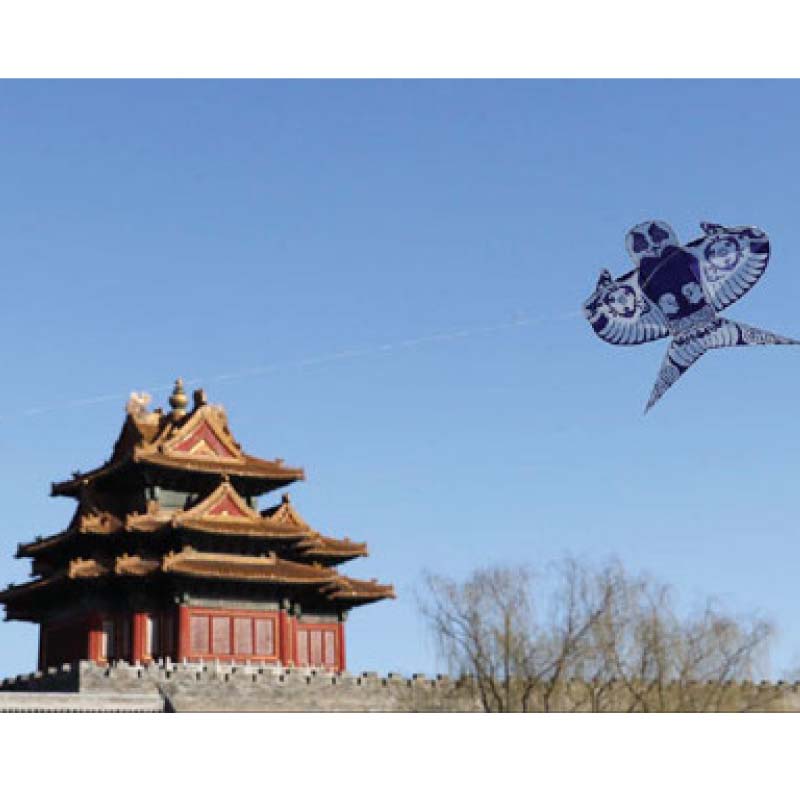When spring breezes blow, colorful paper kites rise easily into the sky, dotting the heavens with cheerful shapes and bright hues.
Beijing kite maker Liu Bin turns out airborne works of art, each one a masterpiece that soars above the earth.
The handmade kites in his shop come in shapes of swallows, goldfish, dragons, the Monkey King and Peking Opera masks.
Some are so tiny they fit in the palm of your hand; others cover an entire wall.
Kites, he says, embody Chinese culture and a craftsman’s wisdom, adding that it takes about 20 days to make one.
Liu Bin told media his great-grandfather was a craftsman in the Forbidden City during the Qing Dynasty (1644-1911) and was in charge of making lanterns, fans and kites.
His grandfather flew a 130-meter-long dragon train kite in Tiananmen Square in 1982.
Chinese philosophers Mo Di (墨翟) and Lu Ban (魯班) are said to have invented the kite in the 15th-century BC, some 2,000 years ago during the Spring and Autumn period
(771 BC-476 BC).
During the Han Dynasty (206 BC-220 AD), kites were used for measurement, testing the wind, lifting men, signaling and military communications.
From China, kites were eventually introduced to neighboring countries like Thailand, Cambodia, India, Korea, Japan and the Philippines.
Marco Polo was said to have brought the kite to Europe during the 13th century.
Silk fabric was the preferred material for the first kites. Over time, paper was used for lighter kites.
Categories
Chinese kite maker keeps old tradition fly high
